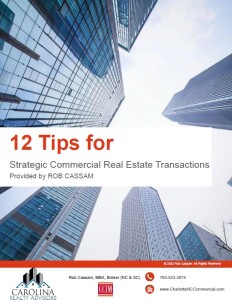This month’s newsletter has just been released! Check out the latest tips for tenants and users of commercial real estate space.
In this issue
- How to Choose the Proper Lease Structure
- Rising Rental Rates Make Apartments Most Popular
- How To Choose Prospective Tenants For Commercial Centers/li>
- How Structure Your Lenders, Property Managers To Be A Service Joint Venture
- Your Comfort Zone For Loans and Investments
A lease is an integral part of many real estate investments. It should outline all the obligations of the tenant and of the landlord. This sounds simple, but many questions arise. If, for example, property taxes increase, does the tenant pay all of the increase or only part of it? If the property must be modernized, who pays for the improvement? Can the tenant be moved out during the renovation? If the costs of servicing the property rise, should the tenant pay none, all, or part of the increased costs? How should inflation be handled—with automatic rental increases? With increases tied to some index, perhaps the Consumer Price Index?……..(more)
Many investors specialize in picking up run-down properties and renovating them for sale or lease. Profit can also be made in acquiring properties that offer extra land. It is sometimes possible to not only get your money back, but also make a profit on the sale of a remodeled house with a reduced amount of land (assuming the local zoning ordinances will so allow), while holding the additional land for long-term appreciation or building another house or small apartment on it. In addition, many larger houses that might otherwise be considered uneconomical can be trimmed down to accommodate a family seeking more spacious quarters. By reducing the structure’s surplus space, many sprawling houses can be made salable. It is also possible to buy a large house, remodel it to a duplex or more units (with zoning approval) and sell it with a good profit….(more)
Owners must think about vacancies when checking a prospective tenant. Will the tenant’s business survive? When you have a prospective tenant for a commercial center, you must consider whether that prospect would be a good tenant. There are two key standards to apply; (1) the prospective tenant’s financial stability; and (2) the prospective tenant’s potential for success…..(more)
Whether times are good or bad, lenders always have foreclosed properties in inventory. During a recession the inventory may be high. One of the problems that banks and insurance companies have is disposing of this real estate owned (REO). They are faced with the decision of whether they wish to dispose of the property immediately or hold it for a period of time to hope for an increase in value. They would like to see the value of the REO increase to equal the loan amount……(more)
Each investor has a “comfort zone” about loans. The leverage seeker wants the largest loan that is practical. Others may have experience or training that calls for no loans at all. They must have the property free and clear. Most of us have a loan comfort zone somewhere between these extremes. Nearly everyone accepts the idea of some sort of mortgage. The use of OPM (other people’s money) makes sense….(more)




